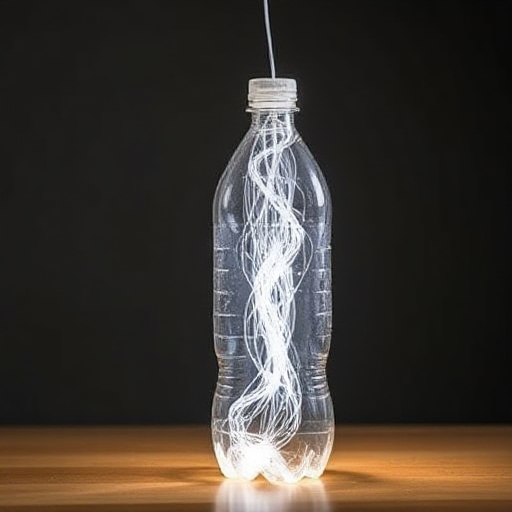The Pullstruder: A Sustainable Solution to Plastic Waste
In the growing movement toward sustainability in manufacturing and technology, the Pullstruder is emerging as a promising solution for upcycling plastic waste into useful products. Specifically, it transforms discarded plastic bottles into 3D printer filament, which can be used in a wide range of applications from prototypes to consumer products, the 3D printer can create almost anything you can imagine. But while the Pullstruder shows significant promise, its abilities and limitations must be considered.
Table of Contents:
Why the Plastic Bottle Is a Problem for the Environment
Abilities and Limitations of the Pullstruder
Creating Longer Strands of Filament
What Is a Pullstruder?
The Pullstruder is a type of filament production machine designed to convert plastic waste—typically polyethylene terephthalate (PET) bottles—into filament for 3D printers. The device works by taking in a long plastic ribbon cut from the PET bottles through a heated extruder with a larger hole diameter (slightly smaller than the diameter filament you are trying to obtain). The filament is pulled through the extra by a winder powered by a motor giving you long consistent strands of filament. This filament can be used just like any commercial 3D printing filament, giving new life to material that would otherwise be discarded in landfills or oceans.
Why the Plastic Bottle Is a Problem for the Environment
Plastic bottles are a pervasive environmental issue. Every year, billions of bottles are used and discarded, with an alarmingly low percentage of them being recycled, that percentage being approximately 20% in parts of the United States. PET plastic, the material commonly used in bottles, takes at least 450 years to degrade, and during that time, it can leach harmful chemicals into the soil and water. Even though recycling rates have improved, a large amount of plastic still ends up in landfills or oceans, where it poses a threat to wildlife and contributes to the global plastic pollution crisis, or it’s incinerated adding the to global warming crisis.
By transforming these bottles into valuable 3D printing filament, the Pullstruder offers a way to reduce the environmental impact of plastic bottle waste and decrease dependency on virgin plastics for filament, while creating a useful resource for the maker community.
Abilities and Limitations of the Pullstruder
Abilities:
- Customization: Unlike factory-made filaments, using a Pullstruder allows users to produce filament at home. You can control the diameter and type of filament, enabling customization for specific 3D printing needs.
- Cost Efficiency: Creating your own filament from recycled plastic bottles can significantly reduce the cost of 3D printing, especially for hobbyists or small businesses that require a lot of material.
Limitations:
- Quality Control: One of the challenges with the Pullstruder is the quality of the filament it produces. While it can work well for basic projects, the filament might not always meet the consistent standards of commercial filaments, particularly when it comes to diameter precision, material purity, or smoothness. Variations in filament quality can cause issues with printing, such as inconsistent extrusion, warping, or stringing.
- Filament Length: Another major limiting factor of the Pullstruder is the length of filament you can obtain. At the moment there is no good way of creating a longer ribbon before going through the extruder, so you can only obtain 1 bottle’s worth of filament at a time. After using the Pullstruder it is possible to connect the filaments into one longer strand of filament for larger prints, but it requires some finagling.
Creating Longer Strands of Filament
Creating longer strands of filament from the single-bottle filaments you already have requires melting the ends of each single-bottle filament together this is a method called fusing, the difficult part is the precision required to get the filaments to adhere to each other. If you melt the ends too much it will create a blob at the bond in the filament making it impossible for the printer to extrude the filament any further. If you don’t melt the ends enough you will be left with a fragile bond that could break from the force of the motor pulling the filament into the printer’s extruder.
Conclusion
The Pullstruder represents a significant step toward reducing plastic waste and promoting sustainability. While there are limitations, particularly in terms of filament consistency and length, its ability to recycle plastic bottles into valuable 3D printing material helps solve two environmental problems at once: plastic pollution and the demand for virgin plastics. By embracing tools like the Pullstruder, we move closer to a more sustainable, circular economy where waste becomes a resource, not a burden. If you are interested in learning about other viable recycled filament options click here!

